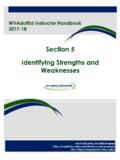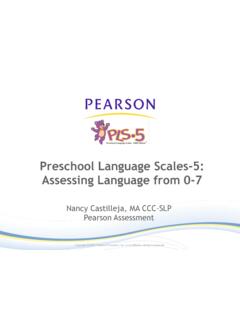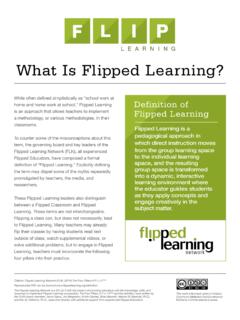Assessing Visual Literacy Learning
Found 8 free book(s)Section 5 Identifying Strengths and Weaknesses
wvde.state.wv.usFamily Literacy Act, enacted August 7, 1998 as Title II of the Workforce Investment Act of 1998. ... ASSESSING LEARNING STYLES 2 ... learning for each of the following learning styles: visual, aural, reading/writing, and kinesthetic. It also gives a list of resources for each learning style that may be helpful for improving one’s study skills.
MATHEMATICS GRADE 9 CURRICULUM GUIDE - gnb.ca
www2.gnb.caliteracy experiences. ... the setting and assessing of personal goals. Diverse Cultural Perspectives Students come from a diversity of cultures, have a diversity of experiences and attend schools ... those students who are primarily visual learners versus those who …
Preschool Language Scales-5: Assessing Language from 0-7
images.pearsonclinical.com– additional items assessing play • For ages 3 through 4 years – new items assessing book handling and concept of print • For ages 5 through 7 years – new items testing • Theory of Mind • Integrated language skills such as use of synonyms • Emergent literacy skills such as naming letters and understanding prefixes
DRDP (2015) Infant-Toddler - Child Development (CA Dept …
www.cde.ca.govLanguage and Literacy Development (LLD) The LLD domain assesses the progress of all children in developing foundational language and literacy skills. These skills can be demonstrated in any language and in any mode of communication. Language and literacy skills in a child’s first language form the foundation for learning English.
Theories, principles and models in education and training
qualifications.vtct.org.ukLearning outcome 1 Understand the application of theories, principles and models of learning in education and training You can: Portfolio reference a. Analyse theories, principles and models of learning b. Explain ways in which theories, principles and models of learning can be applied to teaching, learning and assessment
Growing Success: Assessment, Evaluation and Reporting in ...
www.edu.gov.on.ca2. Learning Skills and Work Habits in Grades 1 to 12 9 3. Performance Standards – The Achievement Chart 15 4. Assessment for Learning and as Learning 27 5. Evaluation 37 6. Reporting Student Achievement 47 7. Students With Special Education Needs: Modifications, Accommodations, and Alternative Programs 69 8.
What Is Flipped Learning?
www.flippedlearning.orgThe Flipped Learning Network is a 501 (c) 3 with the mission of providing educators with the knowledge, skills, and resources to implement Flipped Learning successfully. The Four Pillars of F-L-I-P™ and the definition were written by
READING LITERARY (RL) READING INFORMATIONAL (RI)
www.georgiastandards.org9th-10th Grade English Language Arts Georgia Standards of Excellence (ELA GSE) Georgia Department of Education April 15, 2015 • Page 1 of 5 . READING LITERARY (RL) READING INFORMATIONAL (RI) Key Ideas and Details Key Ideas and Details







